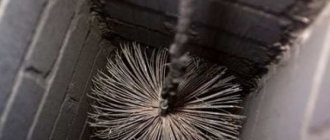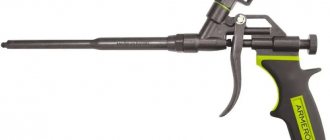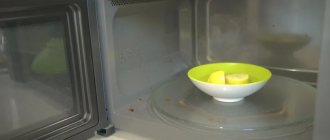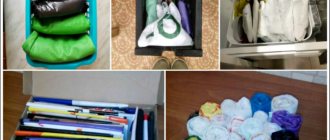One of the common problems that arise in the home is clogged drains in the bathroom and kitchen, which makes it impossible to use plumbing equipment for its intended purpose. Therefore, solving the problem of how to clear a clogged pipe in the kitchen at home is relevant for any owner.
There is a wide range of mechanical devices on the market for dealing with blockages in sewer pipes; to select the best option, it is necessary to have accurate information about the type and materials that caused the blockage. Also, to increase the period of uninterrupted operation of the sewer system, it is useful to know the methods of carrying out preventive work using improvised reagents or household chemicals sold in a specialized retail chain.
Rice. 1 Blockages in the siphon unit
Why and where exactly do clogged pipes happen in the kitchen?
The kitchen is the most visited place in the apartment: some kind of activity is constantly taking place there: cooking, eating, washing dishes. The sink is the most vulnerable place, which bears the heaviest load. It is also important to take into account that, unlike the bathroom, the drains in the kitchen are dirtier: therefore, protective nets are used on pipe outlets. If they are neglected, all kitchen waste goes straight into the sewer outlet, partially remaining on the walls of the pipes in the form of layers.
Over time, the thickness of this layer becomes so large that it leads to serious problems with the passage of water. An omen of such a situation is a slight slowdown in the flow of water from the sink into the drain. Another sign is the presence of special croaking sounds that accompany kitchen drainage: they are created by air coming from inside the system.
If there are blockages in the pipe, the flow of air slows down noticeably. If we are talking about a large plug in a pipe, then it is impossible not to notice it. In such a situation, the question naturally arises: how to break through a pipe in the kitchen?
Methods for removing blockages, how to break through
Once a blocked pipe has been diagnosed, the next step is to fix the problem. At the same time, the main thing is not to panic, because what happened can hardly be called a serious accident. It is clear that you will have to endure some inconvenience during the work to eliminate the blockage, so you need to act as quickly as possible. There are several methods for these purposes.
List of methods for eliminating kitchen blockages:
- Using improvised means.
- Mechanical method.
- Chemical method.
Each option has its own strengths and weaknesses. For example, blockages that are located deep inside the sewer system are usually removed mechanically. Only very light traffic jams can be removed using improvised means. As for chemistry, this method is quite universal: it can handle tasks of varying complexity.
When deciding what is the best way to break through a blockage in a pipe, a combination of methods is often used, since it is not always possible to clear a pipe using just one method. This leads to a noticeable increase in the effect of ongoing activities. For example, flushing the system with hot water, which is a readily available means, can be safely used in all other cases. In short, there are no strict restrictions in this case - you can do everything as long as the result is achieved.
Recommendations for cleaning plastic pipes
Cleaning plastic pipes should be done with extreme caution, since the material is quite susceptible to mechanical damage. It is worth knowing that the smooth surface of plastic pipes does not corrode. Also, surface contaminants do not adhere well to it. However, a blockage can still occur, because fat deposits, hair, and food debris gradually clog the water drain. For plastic pipes, you can use a plunger or household chemicals, which give excellent results.
See also the material: How to clean an automatic washing machine from dirt and scale in 5 steps.
Available means
The list of available means consists of those substances and tools that are either already available on the farm or can be easily purchased. For example, soda, vinegar and hot water are usually found in any home. And a plunger, even if you don’t have one, can be borrowed from your neighbors or purchased at any hardware store, since its cost is low.
The simplest option is to flush the pipe with hot water, which can dissolve fats. If we are talking about steel pipes, you can use boiling water. It is better to rinse the plastic pipeline with ordinary hot tap water by opening it for a few minutes. By also introducing a plunger into the procedure, you can achieve a fairly good effect: it is better to do this after the blockage has already been softened with hot water.
other methods
Despite some effectiveness of hot water, it is not always possible to break through a blockage in a pipe in this way. In this case, you can use a self-prepared solution consisting of soda, vinegar, lemon juice and salt. With the help of soda and vinegar, in this case, a chemical reaction is provoked, while salt acts as a catalyst and solvent (for more details: “How to properly clean pipes with vinegar and soda if the sewer is clogged”).
Lemon juice and vinegar are interchangeable, vinegar is just noticeably cheaper. After mixing, the entire composition must be poured into a pipe, which has already been pre-treated with boiling water. After the solution is poured, it should be left inside the pipe for about 30-60 minutes, then rinse the sink with hot water.
Causes of clogging
Before you start cleaning, you need to familiarize yourself with the main causes of blockages. These include the following:
- Mechanical. Most often, the sink becomes clogged due to mechanical blockages, during which foreign objects and debris get into the pipes. Gradually, the amount of debris accumulates, and water begins to flow worse through the pipes.
- Operational. Operational reasons include the accumulation of fat inside the pipes or the appearance of corrosion.
- Incorrect installation. Sometimes the kitchen is equipped with pipes that are installed incorrectly. Problems can arise if they are installed at the wrong angle, causing debris to gradually accumulate inside.
Mechanical cleaning
What to do if the pipe in the kitchen is clogged, and the time to carry out the cleaning procedure is limited? In this case, a mechanical method is used, implemented with a plunger and wire for cleaning pipes. A plunger is basically a household device that uses the principle of changing pressure in a pipe. In this way, blockages are often either completely removed or noticeably weakened. In the future, you can use the already familiar method of flushing the pipe with hot water. It does not require any special skills in handling the tool.
How to clean pipes in the kitchen if the blockages are deep enough? This is done using a special tool such as wire. It consists of a metal or wire rope, and at the end there is a kind of hook or tip in the form of a ruff. These devices are quite thin and flexible, which makes it possible to reach greater depths of the sewer system. Next, you will need to carry out rotational and translational manipulations, leading to the removal of the blockage by pushing it down the pipe.
If the cable has moved approximately two meters from the blockage, the work can be considered done: it is completed by traditional pipe flushing. To implement this method, in addition to having the plumbing cable itself, you will need certain skills, as well as information about the approximate location of the blockage. However, you can learn during the procedure itself.
Video description
How to remove dirt using a cable is shown in this video:
Cleaning with a hydraulic pump and soda
The hydraulic pump helps remove fresh dirt. Clearing a clogged sink is easy:
- First you need to soften the dirt plug. To do this, use a soda solution.
- Half a pack of soda is poured into the drain hole.
- Pour 1 cup of boiling water on top.
- The mass is left for 10 minutes. The time can be increased if cleaning has not been carried out for a long time.
- The hydraulic pump is filled with hot liquid and placed near the drain.
- Using the pressure of the pump, dirt deposits are pushed through and the pipe is cleared of debris.
If after the cleansing procedure the unpleasant odor has not disappeared, but the water still drains slowly, you can repeat the cleansing a second time. If this is not enough, you should pay attention to other cleaning methods.
Removing dirt using Sanfor
"Sanfor" is presented in the form of a gel product containing destructive and cleansing substances in the composition. The product not only pushes through debris deposits, but also prevents their reappearance.
If the sink is clogged, you need to take the following measures:
- View the instructions for use and take the gel product in the indicated dosage.
- Pour it into the drain hole and leave for 2 hours. During this time, a chemical reaction will occur, during which the pollution will begin to break down.
- Turn on the hot water and leave it for 10 minutes.
"Sanfor" is also used for preventive purposes. It is enough to clean the plumbing once every 2 months.
Removing garbage plugs using Tiret Turbo
Tiret Turbo is a popular means for cleaning plumbing fixtures, which is also used for preventive purposes. How to clean a sink with a chemical:
- Pour 200 ml of the chemical product into a plastic cup. If the contamination is old, you can increase the dose to 250 ml.
- Pour Tiret Turbo into the sink and leave for 1 hour.
- Rinse plumbing fixtures with hot water.
If the problem cannot be resolved at first, you can repeat the procedure. But no more than 2 times. Otherwise, the chemicals in the product may adversely affect the condition of the pipes.
Rinsing plumbing after chemical treatment
Deboucher for plumbing fixtures
This universal product removes both old and new stains. It contains chlorine, potassium and sodium. These substances dissolve debris plugs and protect the pipe surface from damage. The cleansing procedure is as follows:
- Pour 500 ml of product down the drain.
- Leave it for 1 hour.
- Turn on hot water for 10 minutes.
A significant drawback of the product is that it is not very economical to use. You will have to use up almost the entire contents of the tube in one go.
"Bagi Pothan" for removing blockages
Baghi Pothan is a product consisting of caustic soda and is used to clean sanitary ware. This product has a sharp and pungent odor and often leads to allergic reactions. Therefore, it is recommended to use gloves and a protective face mask during the cleaning process. The procedure looks like this:
- A few spoons of the powdered product are poured into the drain. This amount is sufficient to dissolve dense debris accumulations.
- Leave the sink for 1 hour.
- After this, rinse the drain with 1 liter of boiling water.
Bagi Pothan should be used no more than once every 3 months.
Chemical method
How to clean a sewer pipe in the kitchen without using a plunger and cable? This question is very relevant, since both of the above tools involve the presence of unpleasant-smelling dirt during operation. Sometimes it is easier to resort to the help of special cleaning products developed by the modern chemical industry. The choice of such substances is quite extensive, and the most famous representative of this line is “Mole”, which is sold in liquid or powder form.
To remove a blockage in a kitchen pipe using a chemical method, it is important to follow the attached instructions exactly. As a rule, you need to pour or pour the product into the clogged pipe for a certain time, and then rinse it with plenty of hot water. In this way, the issue with weak and medium type plugs is usually resolved; more severe blockages will require calling a plumber or using a mechanical method.
Selected tips
When deciding what to do if there is a blockage in the pipe in the kitchen, it is also important to consider what kind of material was used to make the sewer. For example, a kitchen drain pipe made of plastic is very often used: not every such pipeline can withstand dry cleaning or boiling water well. Therefore, in such cases it is better not to take risks. As for washing with hot water, it is recommended to carry it out both before and after work, regardless of the method used. In general, it is recommended to make it a rule to periodically carry out this procedure as a preventive measure against blockages. When implementing the chemical method, it is recommended to work exclusively with protective gloves, avoiding splashes on exposed skin.
Prevention
To avoid having to suffer with sewerage, follow simple preventive measures:
- install a special mesh on the drain in the kitchen sink to trap food waste;
- do not flush hair down the sink or toilet;
- do not throw paper, hygiene products and other insoluble waste into the toilet;
- Perform preventative cleaning of the system approximately once a month.
It should be noted that modern plastic pipes are less susceptible to contamination than metal ones. To maintain the permeability of the system, in most cases it is enough to clean the siphons in a timely manner.











